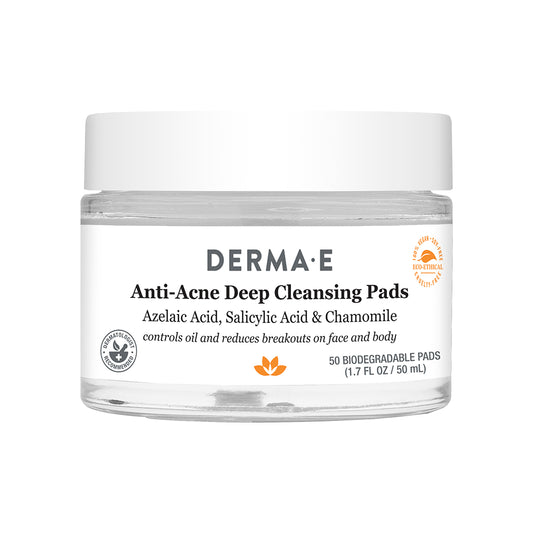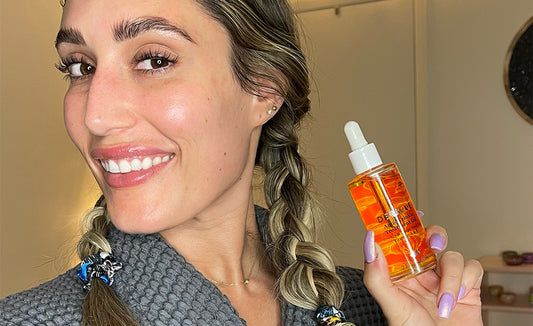Because you take good care of your skin, you know you need to wear some type of sun protection every day in order to protect yourself from the harmful effects of UV rays. There are three kinds of UV rays, UVA, UVB and UVC. UVA and UVB exposure can cause both short- and long-term damage to the skin, ranging from sunburns (UVB) to wrinkles (UVA). (UVC rays generally don’t reach earth’s atmosphere.) Too much exposure to UV rays can also lead to a higher risk of skin cancer. So you know it’s important to wear sun protection, but it helps to be informed about sunscreen so you can make the best choice for your skin type and lifestyle.
What You Need to Know about Sunscreen
Sunscreen generally combines ingredients to provide broad-spectrum coverage, which means it guards against both UVA and UVB rays. There are two types of active ingredients used in sunscreens, and many sunscreens contain a combination of both. Chemical active ingredients absorb UV rays so they don’t fully penetrate your skin, while physical active ingredients deflect the rays because the ingredient isn’t absorbed into the skin, but rather sits on the surface.
Typically, chemical active ingredients in sunscreen include oxybenzone, avobenzone, homosalate, octocrylene, octisalate and octinoxate. According to the Environmental Working Group, you should avoid oxybenzone because it can irritate skin and preliminary research suggests it could interfere with the body’s normal hormone production. The organization also says that most of the other chemical ingredients may also carry a risk of skin allergy or hormone disruption. Environmental Working Group gives its best chemical ingredient ranking to avobenzone because it offers the highest level of protection out of all the chemical ingredients, has limited skin penetration and hasn’t shown signs of interfering with hormone production. Recently, it’s been determined that oxybenzone and octinoxate can have a dangerous effect on the environment, with research showing those chemicals have damaged coral reefs and threatened marine life.
Physical active ingredients, also called mineral ingredients, are titanium dioxide and zinc oxide. Generally, these have lower toxicity than chemical ingredients, according to the Environmental Working Group—because they don’t penetrate the skin, there’s lower risk that they can be absorbed into the body and cause havoc with your hormones. They’re also considered safer in terms of environmental impact. Titanium dioxide and zinc oxide both guard against UVA and UVB ray absorption, although the latter offers more complete protection.
Sunscreens are measured in terms of their sun protection factor from UVB rays, more commonly known as SPF. If, for instance, you have a sunscreen with SPF 15, it means it will take 15 times longer for your skin to burn than it would if you weren’t wearing sunscreen at all. If you have fairer skin, a family history of skin cancer or if you routinely spend extended amounts of time outdoors, you will want a sunscreen with a high SPF number—but remember, you’ll always have to reapply, especially if you are swimming or sweating.
Usually, sunscreens with chemical ingredients are easier to apply than those with mineral active ingredients because the lotion is thinner and more lightweight in texture. To remedy that, many manufacturers of sunscreens with physical ingredients have tried to improve on the typical thick texture and whitish tint by using nanoparticles, in which the mineral has been reduced to a microscopic size. However, it’s uncertain if there are long-term health risks posed by nanoparticles, especially if they are inhaled, and there is evidence that the smaller particles don’t provide as much UV protection, according to the Environmental Working Group. You may want to look for the terms “non-nanoparticle” or “nanoparticle-free” on your sunscreen.
Why You Should Use DERMA E Sunscreen
At DERMA E, we want to offer you a safe and superior option for sun protection. Our Sun Care Collection offers a range of products that provide the ideal UVA/UVB broad-spectrum coverage. We use zinc oxide as our active ingredient for the most complete and effective protection, and it is nanoparticle-free. Instead of supplementing the zinc oxide with chemical sun filters, we use the antioxidants Green Tea and vitamin C, which have been shown to offer UV protection. And because they are chemical-free, our sunscreens won’t harm ocean life or ecosystems.
We offer several versions of our sunscreen so you’re sure to find one that fits your personal preference. Our Sun Defense Mineral Sunscreen Broad Spectrum SPF 30 comes in oil-free lotion formulations for both the face and the body. For easy on-the-go application, there is the stick form of Sun Defense Mineral Sunscreen SPF 30; we even have a sunscreen to protect your baby’s tender skin.
Like all DERMA E products, our sunscreens are 100% vegan and cruelty free and have only the best ingredients. What they don’t have: parabens, petrolatum, sodium lauryl sulfates, mineral oil, artificial colors, gluten, soy or GMOs. With our sunscreens, you don’t have to worry about what you put on your body so you can go out and enjoy a beautiful sunny day.





